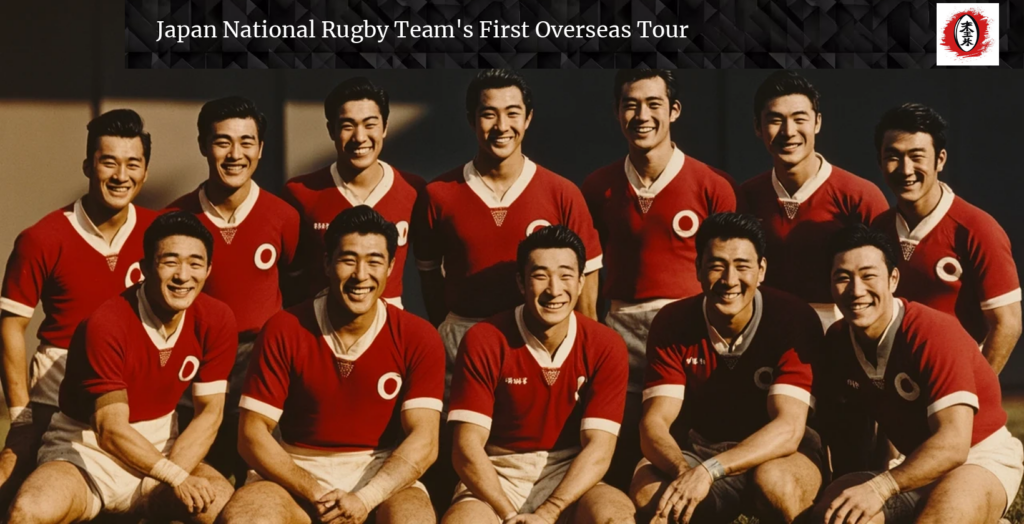The Japan Rugby Football Union (JRFU) stands as the national governing body for rugby union in Japan, playing a pivotal role in the development and promotion of the sport since its establishment in 1926. As a member of World Rugby since 1987, the JRFU has been instrumental in elevating Japan’s status on the international rugby stage.
The JRFU oversees all aspects of rugby union in Japan, from organizing domestic competitions to managing national teams and implementing comprehensive development programs. Its responsibilities extend to the administration and promotion of rugby at all levels, from grassroots to professional leagues.
In recent years, the JRFU’s efforts have catapulted Japanese rugby into the global spotlight. The organization’s strategic initiatives have not only fostered the growth of the sport domestically but have also contributed significantly to Japan’s emergence as a competitive force in international rugby. This rise to prominence was particularly evident in Japan’s remarkable performances in recent Rugby World Cups, showcasing the nation’s growing rugby prowess on the world stage.

History
The Origins of Rugby in Japan
The story of rugby in Japan begins in 1866, marking the sport’s introduction to the island nation. This momentous occasion coincided with the establishment of the Yokohama Football Club, widely recognized as the first organized rugby club in Japan. The club, formed by British expatriates in the port city of Yokohama, laid the foundation for what would become a rich rugby tradition in the country.
As the sport gained traction, it reached a significant milestone in 1899 when Edward Bramwell Clarke, an English lecturer at Tokyo’s Keio University, introduced rugby to his students. This event is often cited as the beginning of Japanese participation in rugby, sparking interest among the local population.

Formation of the JRFU
Recognizing the need for a centralized governing body to oversee the burgeoning sport, the Japan Rugby Football Union was officially established on November 30, 1926. Shigeru Kayama was appointed as the first president, marking the beginning of an era of structured rugby governance in Japan.
The formation of the JRFU was a crucial step in the development of rugby in Japan. It provided a framework for organizing competitions, standardizing rules, and promoting the sport across the country. The JRFU’s establishment also paved the way for Japan’s eventual integration into the international rugby community.
Development of Rugby in Japan
The period following the JRFU’s formation saw steady growth in rugby’s popularity and participation rates. However, this progress was interrupted by World War II, during which the national championship was suspended, and many rugby activities were curtailed.
Pre-World War II era
Before the outbreak of World War II, the JRFU actively promoted rugby across Japan. The organization focused on organizing competitions, implementing development programs, and expanding the sport’s reach beyond its initial strongholds. Despite the challenges posed by the global economic downturn of the 1930s, rugby in Japan continued to grow, albeit at a slower pace.
Post-war revival and growth
The aftermath of World War II presented significant challenges for rugby in Japan. However, the JRFU remained committed to reviving the sport. The organization’s efforts bore fruit as rugby experienced a renaissance in the post-war years.
By the 1950s, rugby was regaining its footing in Japan. The JRFU’s focus on grassroots development and school programs helped cultivate a new generation of rugby players and enthusiasts. In 1952, Japan’s national team embarked on its first overseas tour since the end of World War II, visiting Canada and marking the country’s return to the international rugby scene.

The following decades saw steady growth in both the quality and popularity of Japanese rugby. The establishment of corporate rugby teams in the 1970s and 1980s injected new resources and professionalism into the sport. By the 1980s, Japan was regularly competing in international tournaments, setting the stage for its future successes.
A significant milestone was reached in 1987 when Japan participated in the inaugural Rugby World Cup. Although the team’s performance was modest, this marked the beginning of Japan’s consistent presence on the world stage of rugby.
Achievements
International
Japan’s achievements in international rugby have been notable in recent years. The national team, known as the Brave Blossoms, has made significant strides, particularly with their historic victory over South Africa in the 2015 Rugby World Cup. This match is often referred to as the “Brighton Miracle” and is considered one of the biggest upsets in rugby history.
In the 2019 Rugby World Cup, hosted by Japan, the Brave Blossoms reached the quarterfinals for the first time, showcasing their development and competitiveness on the world stage. Their performance in this tournament solidified Japan’s reputation as a formidable rugby nation.
These achievements have not only elevated Japan’s status in international rugby but have also galvanized interest and participation in the sport domestically. The JRFU’s strategic initiatives, including investment in grassroots programs and the promotion of rugby in schools, have been pivotal in fostering a robust rugby culture in Japan.
In conclusion, the Japan Rugby Football Union has played an indispensable role in the rise of rugby in Japan. From its early days with the Yokohama Football Club to the modern era of international competitions, the JRFU’s efforts have been central to the sport’s growth and success. As Japan continues to build on its rugby legacy, the JRFU’s commitment to development and excellence will undoubtedly drive the sport to new heights in the years to come.
